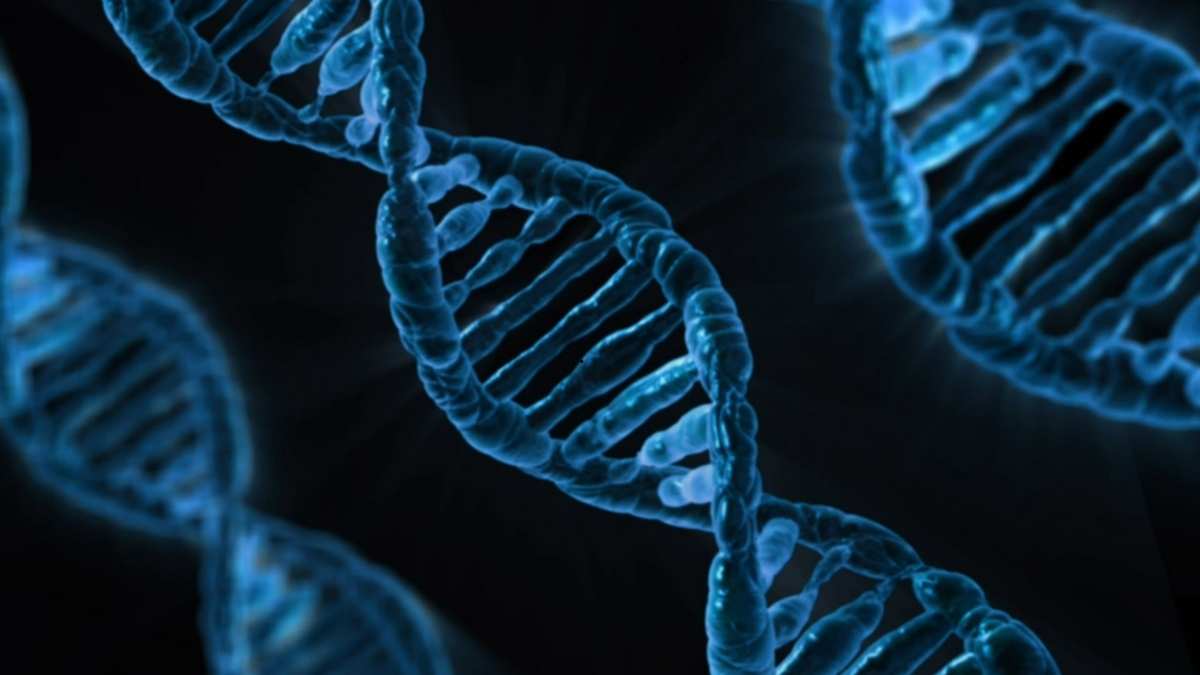CUET Biology Syllabus 2026: The National Testing Agency, which is the conducting body for the Common University Entrance Test (CUET), is expected to conduct the CUET UG Exam 2026 between May and June 2026 at various examination centers across the country.
Biology is one of the major domain subjects for the science stream students; hence, in this article, we have shared the CUET Biology Syllabus 2026 topic-wise detailing students about all the important topics that they need to study as process to complete their preparation for the exam. Scroll down in the article below to find the download link for the CUET Biology Syllabus 2026 PDF.
CUET Biology Syllabus 2026
All the students who have completed their Class 12th from the Science stream while having Biology as one of their major subjects and want to continue their education in the same discipline must now start preparing for the CUET Biology Exam 2026 as soon as possible. All the aspirants need to note that the CUET Syllabus 2026 for Biology students has been divided into domain subjects like Zoology and Botany.
Students in the CUET Biology Syllabus 2026 will be studying various crucial topics like the structure and functions of plants and animals, including their growth and reproduction. Human biology topics like digestion, breathing, and the circulatory system are included. The syllabus also teaches ecology, which explains how living things interact with their surroundings, and evolution, which looks at how species change over time.
CUET UG Zoology Syllabus
The CUET Zoology Syllabus 2026 has been released online by the authorities, announcing that the students will have to study various important topics like the Origin of Life, Organic Evolution, Mechanism of Organic Evolution, Comparison between Periplaneta and Blatta, etc. Below we have mentioned the topics wise CUET Zoology Syllabus are given below:
- Origin of Life
- Organic Evolution
- Mechanism of Organic Evolution
- Human Genetics and Eugenics
- Applied Biology
- Mammalian Anatomy (Eg. Rabbit)
- Animal Physiology
- Comparison between Periplaneta and Blatta
CUET UG Botany Syllabus
The CUET Botany Syllabus has been released online, announcing the importance of studying topics like Plant Cell, Protoplasm, Seeds in angiosperm plants, Cell Differentiation Plant Tissue, Anatomy of Root, Stem, and Leaf, Important phylums, etc. All the aspirants who are looking forward to appearing for the CUET Exam 2026 must study all the topics mentioned in the CUET UG Botany Syllabus 2026 mentioned ahead:
- Plant Cell
- Protoplasm
- Ecology
- Ecosystem
- Genetics
- Seeds in angiosperm plants
- Fruits
- Cell Differentiation Plant Tissue
- Anatomy of Root, Stem, and Leaf
- Important phylums
- Soil
- Photosynthesis
CUET 2026 Unit-Wise Biology Syllabus
Before starting CUET 2026 preparation, students must go through the latest CUET syllabus for Biology. It includes all the important topics and chapters that will be covered in the exam. The syllabus is divided into units, and each unit has specific subtopics. Knowing the complete and updated syllabus helps students focus on what matters most and plan their studies better. This way, they can manage their time well and avoid missing any key topics. Staying aware of the latest syllabus changes is important to boost preparation, stay confident, and score higher in the CUET Biology section.
Unit I: Reproduction
- Reproduction in organisms: Reproduction, a characteristic feature of all organisms for the continuation of species; Modes of reproduction –Asexual and sexual; Asexual reproduction; Modes- Binary fission, sporulation, budding, gemmule, fragmentation; vegetative propagation in plants.
- Sexual reproduction in flowering plants: Flower structure; Development of male and female gametophytes; Pollination–types, agencies, and examples; Outbreedings devices; Pollen-Pistil interaction; Double fertilization; Post fertilization events– Development of endosperm and embryo, Development of seed and formation of fruit; Special modes– apomixis, parthenocarpy, polyembryony; Significance of seed and fruit formation.
- Human Reproduction: Male and female reproductive systems; Microscopic anatomy of testis and ovary; Gametogenesis- spermatogenesis & oogenesis; Menstrual cycle; Fertilisation, embryo development up to blastocyst formation, implantation; Pregnancy and placenta formation (Elementary idea); Parturition (Elementary idea); Lactation (Elementary idea).
- Reproductive health: Need for reproductive health and prevention of sexually transmitted diseases(STD); Birth control- Need and Methods, Contraception and Medical Termination of Pregnancy (MTP); Amniocentesis; Infertility and assisted reproductive technologies – IVF, ZIFT, GIFT (Elementary idea for general awareness).
Unit II: Genetics and Evolution
- Heredity and variation: Mendelian Inheritance; Deviations from Mendelism– Incomplete dominance, Co-dominance, Multiple alleles and Inheritance of blood groups, Pleiotropy; Elementary idea of polygenic inheritance; Chromosome theory of inheritance; Chromosomes and genes; Sex determination –In humans, birds, honeybee; Linkage and crossing over; Sex-linked inheritance- Haemophilia, Colour blindness; Mendelian disorders in humans– Thalassemia; Chromosomal disorders in humans; Down syndrome, Turner’s and Klinefelter’s syndromes.
- Molecular Basis of Inheritance: Search for genetic material and DNA as genetic material; Structure of DNA and RNA; DNA packaging; DNA replication; Central dogma; Transcription, genetic code, translation; Gene expression and regulation–Lac Operon; Genome and human genome project; DNA fingerprinting.
- Evolution: Origin of life; Biological evolution and evidence for biological evolution (Paleontological, comparative anatomy, embryology, and molecular evidence); Darwin’s contribution, Modern Synthetic theory of Evolution; Mechanism of evolution–Variation(Mutation and Recombination) and Natural Selection with examples, types of natural selection; Gene flow and genetic drift; Hardy- Weinberg’sprinciple; Adaptive Radiation; Human evolution.
Unit III: Biology and Human Welfare
- Health and Disease: Pathogens; parasites causing human diseases (Malaria, Filariasis, Ascariasis, Typhoid, Pneumonia, common cold, amoebiasis, ring worm); Basic concepts of immunology–vaccines; Cancer, HIV, and AIDs; Adolescence, drug and alcohol abuse. Improvement in food production: Plant breeding, tissue culture, single cell protein, Biofortification; Apiculture and Animal husbandry.
- Improvement in food production: Plant breeding, tissue culture, single cell protein, Biofortification; Apiculture and Animal husbandry.
- Microbes in human welfare: In household food processing, industrial production, sewage treatment, energy generation, and as biocontrol agents and biofertilizers.
Unit IV: Biotechnology and its Applications
- Principles and process of Biotechnology: Genetic engineering (Recombinant DNA technology).
- Application of Biotechnology in Health and Agriculture: Human insulin and vaccine production, gene therapy; Genetically modified organisms-Bt crops; Transgenic Animals; Biosafety issues–Biopiracy and patents.
Unit V: Ecology and Environment
- Organisms and environment: Habitat and niche; Population and ecological adaptations; Population interactions– mutualism, competition, predation, parasitism; Population attributes–growth, birth rate and death rate, age distribution.
- Ecosystems: Patterns, components; productivity and decomposition; Energy flow; Pyramids of number, biomass, energy; Nutrient cycling (carbon and phosphorous); Ecological succession; Ecological Services– Carbon fixation, pollination, oxygen release.
- Biodiversity and its conservation: Concept of Biodiversity; Patterns of Biodiversity; Importance of Biodiversity; Loss of Biodiversity; Biodiversity conservation; Hotspots, endangered organisms, extinction, Red Data Book, biosphere reserves, National parks, and sanctuaries.
- Environmental issues: Air pollution and its control; Water pollution and its control; Agrochemicals and their effects; Solid waste management; Radioactive waste management; Greenhouse effect and global warming; Ozone depletion; Deforestation; Any three case studies as success stories addressing environmental issues.
CUET Biology 2026: Exam Pattern
The CUET Biology exam is simple. It has multiple-choice questions (MCQs) with four options, and you choose the correct one. The questions come from your high school biology topics, like cell biology, genetics, ecology, and more. The exam may have different sections and cover the main ideas of biology. The number of questions and time limit can change, so check the details for your year. The test checks how well you understand biology and how you can use what you’ve learned.
| CUET Biology Exam Pattern | |
| Exam conducting body | National Testing Agency |
| Examination Name | Common Universities Entrance Test (CUET 2026) |
| Medium of Examination | 13 Languages (English, Kannada, Hindi, Punjabi, Marathi, Tamil, Urdu, Malayalam, Odia, Assamese, Telugu, Bengali, and Gujarati) |
| Examination Mode | Computer-based Test (CBT) |
| Time allotted for Biology Exam | 45 minutes |
| Total number of questions in the Biology section | 45/50 questions |
| Total Biology Questions to be Answered | 35/40 questions |
| Total Marks in Biology Section | 200 Marks |
| Marking Scheme |
|
Best Books for CUET 2026 Biology Preparation
Preparing for CUET Biology requires good study materials. The best books help students understand concepts clearly and practice questions effectively. Choosing the right books can make your preparation easier and more efficient. Look for books that cover the full syllabus, have clear explanations, and provide plenty of practice questions.
- NCERT Biology Class 11 & 12
- Trueman’s Elementary Biology (Volume 1 & 2)
- Dinesh Objective Biology
- Pradeep’s Biology
- MTG Objective NCERT at your Fingertips Biology
- Biology by GR Bathla Publications
How to Prepare for the CUET Biology Exam 2026?
- Understand the Syllabus and Exam Pattern: Start by thoroughly reviewing the syllabus and exam structure to guide your preparation.
- Focus on Key Topics: Go through past CUET question papers to identify important topics and areas with higher weightage.
- Evaluate Your Strengths and Weaknesses: Assess your strengths and weaknesses after completing the syllabus. Focus on strengthening your weak areas, especially those with higher weightage.
- Practice Regularly: Take mock tests and solve previous year’s papers to improve your accuracy and time management. Review your performance to identify areas for improvement.



 Best CUET Coaching in Delhi - Factors De...
Best CUET Coaching in Delhi - Factors De...
 Best CUET Coaching in Noida - Get Top 5 ...
Best CUET Coaching in Noida - Get Top 5 ...
 CUET PG Previous Year Question Papers wi...
CUET PG Previous Year Question Papers wi...







